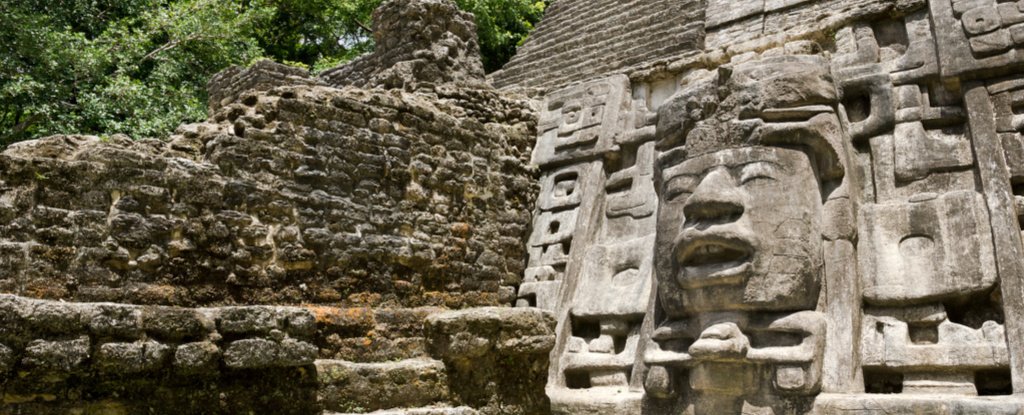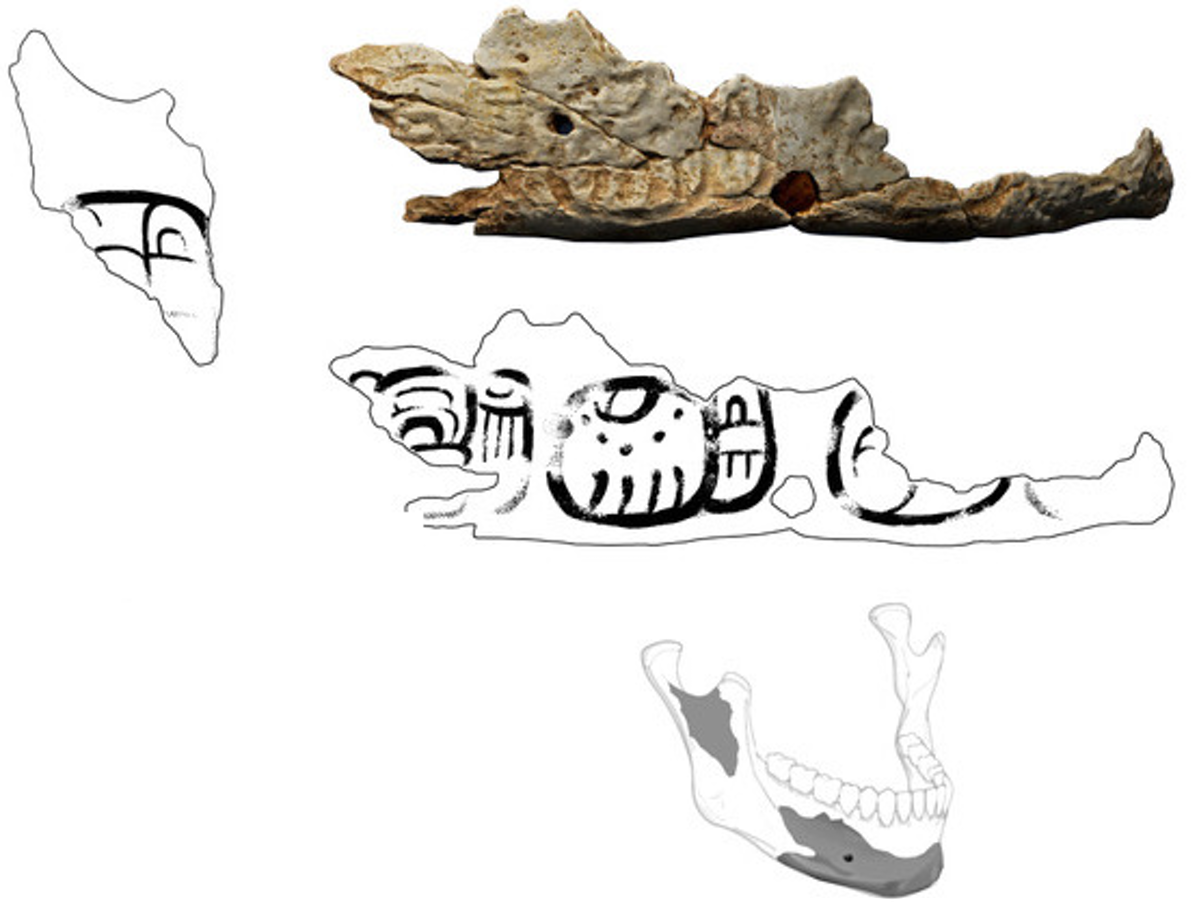Welcome to DU!
The truly grassroots left-of-center political community where regular people, not algorithms, drive the discussions and set the standards.
Join the community:
Create a free account
Support DU (and get rid of ads!):
Become a Star Member
Latest Breaking News
Editorials & Other Articles
General Discussion
The DU Lounge
All Forums
Issue Forums
Culture Forums
Alliance Forums
Region Forums
Support Forums
Help & Search
Anthropology
Related: About this forumTrophies Made of Human Skulls Hint at Something Sinister Around Time of Maya Collapse

GABRIEL D. WROBEL, THE CONVERSATION 18 JUN 2019
Two trophy skulls, recently discovered by archaeologists in the jungles of Belize, may help shed light on the little-understood collapse of the once powerful Classic Maya civilization.
The defleshed and painted human skulls, meant to be worn around the neck as pendants, were buried with a warrior over a thousand years ago at Pacbitun, a Maya city. They likely represent gruesome symbols of military might: war trophies made from the heads of defeated foes.
Both skulls are similar to depictions of trophy skulls worn by victorious soldiers in stone carvings and on painted ceramic vessels from other Maya sites.
You can see a fragment of the Pacbitun trophy skull below.

(Christophe Helmke/Jesse Pruitt/CC BY-ND)
Drilled holes likely held feathers, leather straps or both. Other holes served to anchor the jaws in place and suspend the cranium around the warrior's neck, while the backs were sawed off to make the skulls lie flat on the wearer's chest.
Flecks of red paint decorate one of the jaws. It's carved with glyphic writing that includes what my collaborator Christophe Helmke, an expert on Maya writing, believes is the first known instance of the Maya term for "trophy skull."
What do these skulls - where they were found and who they were from - tell us about the end of a powerful political system that thrived for centuries, covering southeastern Mexico, all of Guatemala and Belize, and portions of Honduras and El Salvador?
My colleagues and I are thinking about them as clues to understanding this tumultuous period.
More:
https://www.sciencealert.com/trophies-made-of-human-skulls-hint-at-something-sinister-around-time-of-maya-collapse
2 replies
 = new reply since forum marked as read
Highlight:
NoneDon't highlight anything
5 newestHighlight 5 most recent replies
= new reply since forum marked as read
Highlight:
NoneDon't highlight anything
5 newestHighlight 5 most recent replies
Trophies Made of Human Skulls Hint at Something Sinister Around Time of Maya Collapse (Original Post)
Judi Lynn
Jun 2019
OP
KY_EnviroGuy
(14,694 posts)1. The way they're using technology to recreate this history is amazing....
Snips from article:
The vast Maya empire flourished throughout Central America, with the first major cities appearing between 750 and 500 BCE. But beginning in the southern lowlands of Guatemala, Belize and Honduras in the eighth century CE, people abandoned major Maya cities throughout the region. Archaeologists are fascinated by the mystery of what we call "the collapse" of this once powerful empire.
--------
Clearly violence and warfare contributed to the end of some southern lowland cities, as evidenced by quickly constructed fortifications identified by aerial LiDAR surveys at a number of sites.
--------
At the northern site of Xuenkal, Mexico, Vera Tiesler and colleagues used strontium isotopes to pinpoint the geographic origin of a warrior and his trophy skull. He was local from the north. But the trophy skull he brought home, found atop his chest in burial, was from an individual who grew up in the south.
--------
Clearly violence and warfare contributed to the end of some southern lowland cities, as evidenced by quickly constructed fortifications identified by aerial LiDAR surveys at a number of sites.
--------
At the northern site of Xuenkal, Mexico, Vera Tiesler and colleagues used strontium isotopes to pinpoint the geographic origin of a warrior and his trophy skull. He was local from the north. But the trophy skull he brought home, found atop his chest in burial, was from an individual who grew up in the south.
These grisly artifacts lend an intriguing element to the sweep of events that resulted in the end of one of the richest, most sophisticated, scientifically advanced cultures of its time.
Thanks for the OP, Judi Lynn.......
Judi Lynn
(163,475 posts)2. I've thought about that, too, so often. Things are able to happen so much more quickly, aren't they?
I've thought so hard about how much easier it is to spot cities in forests, under the sand, etc., and wondered if it could be like a golden age for archeologists.... So amazing.
Thanks for reading, Ky. EnviroGuy. ![]()